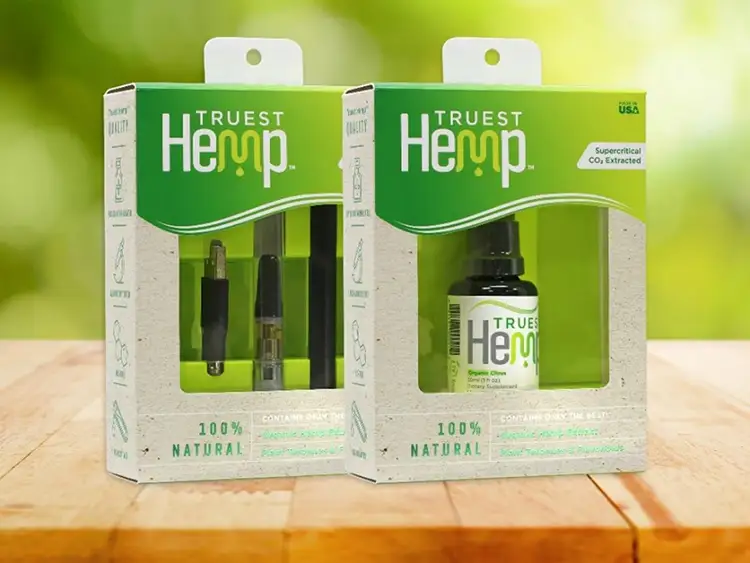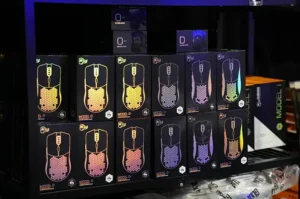
By Steven Schnoll, Schnoll Media Consulting
Sustainability is becoming increasingly important for the packaging world, including cartons, labels and more. Sustainability is not just a buzzword but a core part of the packaging industry value chain. Today, consumers, brands, packagers and governmental regulators are heavily focused on the environment and the demand for sustainable packaging solutions.
In the highly competitive retail marketplace, brand owners know that consumer attitudes are vital in purchasing decisions. Creatively designed packaging structures create a First Moment of Truth (FMOT) in purchasing decision-making. For brand organizations to thrive, creating dynamic packaging is paramount. Realizing this, Consumer Packaging Goods (CPGs) manufacturers turn to innovative technologies to help their packaging stand out. This includes metallics and other specialty effects for print that can transform and influence a consumer’s purchase decision.
Sustainability Education
Let’s define the words “repulpability” and “recyclability” regarding paper and packaging. Repulpability refers to the ability to convert paper back into pulp, whereas recyclability generally is about the capability of a substrate to be processed into new paper or paperboard. Repulpability is a critical characteristic of paper products that are intended to be recycled. When recycled, paper is mixed with water and turned into a slurry. The slurry then is screened to remove contaminants, and the resulting pulp is used to make new paper products.
It is a rapidly evolving area where CPGs and consumers are concerned but remain confused about sustainable packaging. Actual sustainability performance will depend on which element is prioritized. Sustainable packaging demands less use of natural resources, making repulpability very important (vs. managing natural resource depletion). Municipal Recycling Facilities (MRFs) also are critical in the packaging supply chain. How they process printed materials with metallic effects is essential to creating a more sustainable future. Packagers and brand companies want to learn from experts about significant research and the efficient and feasible recycling process for metallic transfer processes.
FSEA Studies Recyclability
In 2021, the Foil & Specialty Effects Association (FSEA) sponsored a sustainability study conducted by Georgia Tech’s Renewable Bioproducts Institute to demonstrate that paper and paper boards with foil-stamped metallic transfer foils can be repulped. Georgia Tech researchers tested a 12 pt coated, one-sided card stock with 50% up to 100% metallic transfer coverage. The conclusions:
- 75% of metallic transfers could be repulped with very low rejects.
- The aluminum in the metallic transfer foil could be broken down into small particles and were removed from fibers during screening.
- The sample sheet demonstrated similar physical strengths to recycled paper fibers.
- It is feasible to repulp the paper that included the metallic transfer foil as it is done in standard recycling settings.
More recently, FSEA has taken a further step and has unveiled its newest study – Recycling of Fiber-Based Materials with Transfer Metallic Decoration. The study was commissioned by FSEA and was conducted by the Van Dyk Technology Center. The testing at Van Dyk, one of North America’s leading providers of comprehensive recycling and sorting systems, included 20 samples of eight different products. The following were the conclusions from the testing:
- The eight folding carton and greeting card samples were tested at the Van Dyk Testing Center to mimic various functions found in MRF sorting plants in a laboratory setting.
- All eight samples of folding cartons and greeting cards included an estimated 25% up to 75% coverage of transfer metallic decoration.
- The summary of the test results for each of the eight fiber-based transfer metallic decorated samples demonstrated that 100% of all samples were sorted to be included in the recycling stream. None of the metallic decorated samples were sorted and destined for landfill.
- Brand owners, Print Service Providers (PSPs) and designers have testing conclusions that transfer metallic decoration is most likely being recycled by MRFs.
- The test results of the Van Dyk sorting study, with the conclusions from the FSEA Repulping of Foil Decorated Paper study, indicates that fiber-based transfer metallic decorated materials are recyclable and currently are most likely being sorted by MRFs to be included in the recycling stream.
(Both of the above studies/tests are available through FSEA.)
These findings will help packagers meet their sustainability goals without compromising their designs and branding initiatives. Customer expectations constantly are evolving. Consumers want to know that packagers are thinking about the environment as much as trying to make a lasting impression that generates a sale. Forward-thinking brands recognize the significance of ensuring sustainability, and now research clearly illustrates that the repulpability of metallic transfer foils achieves those evolving expectations.
Evolving Brand/Consumer Perspective

In January 2023, the non-profit member-based organization Two Sides commissioned a global survey study of 10,250 people from the independent research company Toluna. Two Sides findings stated that “55% of consumers surveyed prefer paper packaging over plastic.” This is a significant change in attitudes toward printed paper-based packaging. Respondents felt paper packaging is better for the environment than plastic and glass.
In an interview with Ben Markens and Brian Westerlind, who manage the Paperboard Packaging Council, Markens shared “that the ‘bling’ in folding cartons that employ metallic transfer materials creates a great value add for packaging companies selling to brand owners.” Markens pointed out “that while the vast amount of printed folding cartons have no metallic foil decorating, the majority of winners, like high-end beverages and cosmetic packaging (in their recent association competition) utilized foil decorating very effectively.” Markens continued with a significant potential issue for international packagers, “even though US packages are heavily invested in sustainability, the European Union is creating higher standards for sustainability than the United States.”
As brand leaders began to craft sustainability strategies and experiment with different metallic foil applications, they needed answers from suppliers. Diamond Packaging of Rochester, New York, is a leading packaging converter focused on green initiatives. Diamond Packaging realizes its sustainability actions can profoundly impact the industry and the environment. In a recent interview with Eric Longnecker and Dennis Bacchetta, the two made it clear through the Diamond Packaging Greenbox initiative that they are “empowering our brand customers with creative metallic design transfer capabilities that meet or exceed customer expectations for recycling folding cartons.” Diamond Packaging is committed “to focusing on sustainability throughout the entire operation.” They believe the company’s commitment to sustainability in their operation makes them more attractive to CPGs to seek them out as a supplier.
During an interview, Longnecker shared that “examining the scientific impact of foil transfer is an ongoing mission.” Bacchetta stated that 40% of all the folding cartons the company produced for customers utilize metallic foil transfer processes. Diamond Packaging has created a fact sheet called “Decorative Foil by the Numbers,” which takes a closer look at the consumer and environmental issues related to metallic foil in packaging. Its facts include:
- The Value of Foils: Perception Research Services did a study in 2004 that showed that decorated foil packaging had an 80% higher appeal and brand awareness. This was supported by an FSEA study that found that foil had a 44% better chance of attracting consumer attention.
- Recyclability of Foil: The Georgia Tech and Western Michigan research studies validate this premise.
- Literally Splitting Hairs: The aluminum foil layer is less than .05 microns, a fraction of the width of a human hair.
- Zone Coverage: Another way to analyze this fact is to take a jumbo roll of foil weighing 440 pounds and covering the length of 2.4 football fields. The amount of foil on that roll weighs 1.043 ounces and measures .66 cubic inches in volume, about the same as the tip of one’s thumb.
- Carbon Neutrality of Paperboard: The American Forest and Paper Association and American Wood Council clearly state that paperboard is carbon neutral.
Attracting Consumers
As stated, consumers are focused on brand identification (FMOT). Metallic decorating is an excellent example of creating special effects on printed substrates that attract consumers to a specific brand. The power of using metallic effects, whether hot, cold or digital, is a significant brand identifier and attraction for consumers.
Chris Leary, a US distributor for Gietz and Vinfoil, shared an incredibly detailed presentation designed for packaging and metallic transfer processes. Leary illuminated the value chain for metallic cold foil decorating in this document. The presentation highlighted the value proposition and the “de-inkable and repulpable characteristics.” It also stated, “72% of consumers are influenced by product packaging, and 36% would consider avoiding a brand that isn’t actively trying to recycle packaging.”
Glorious Gaming is a dynamic, growing company producing computer accessories for gamers. Its products are colorful and exotic in their design. Therefore, according to Chris Wilson, the company’s packaging engineer, “We needed packaging that would be ‘eye-catching’ to our potential customers.”
The company did a great deal of research and determined that metallic transfer technologies met its packaging expectations. While its creative designs drive customers to purchase products, Glorious Gaming also wanted to make sure its packaging would be sustainable by being repulpable and recyclable. The FSEA Georgia Tech research built a strong confidence in using metallic foil decorating.
Working Toward the Future
Karen Kromat of Case Paper, a leading distributor of transfer metallic substrates, believes that “metallic substrates present a genuine growth opportunity for the printing industry.” While issues still have to be addressed concerning the plastic adhesive liners that are not recyclable, municipal recycling centers can successfully recycle vast quantities of metalized packaging products. Case Paper is committed to helping make its metalized transfer substrates as sustainable as possible while recognizing that many municipal recycling centers are rejecting plastic adhesives while accepting transfer metallic decorated recycling products.
A sub-committee of FSEA’s Sustainability Committee is working with MRFs to ensure that metallic transfer foil packaging is recycled correctly. The big question in front of the committee and for recycling facilities is ‘where does the decorated packaging material go?’ The goal is to have MRFs carefully test transfer metallic decorated packaging with many organizations to facilitate the best recycling processes. Frank Kelly, ITW ShineMark, sub-committee chair, said, “This is an ongoing process and FSEA is committed to finding workable solutions.” The goal is to increase MRF operations’ efficiency while simultaneously creating more recyclable and repulpable by-products.
Conclusion
FSEA is committed to assisting brand owners, converters, printers and consumers to develop the most dynamic, growth-oriented and exciting metallic transfer decorating methods for the packaging supply chain. Innovation and sustainability in packaging entrepreneurship are core values of everything it does. Helping the the industry design new environmentally friendly business models with dynamic metallic transfer embellishments while fostering entrepreneurial ecosystems around the globe will never be compromised.

